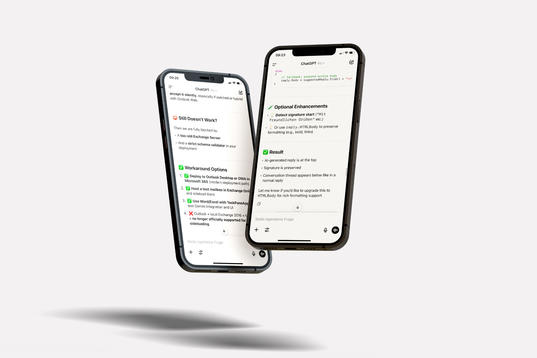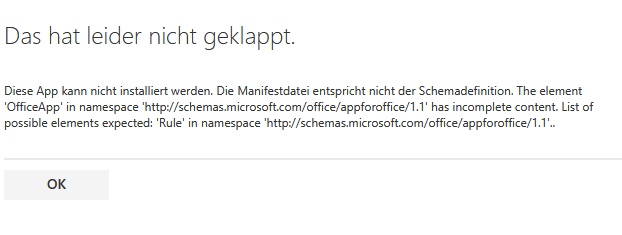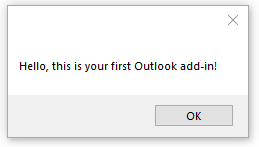From Dead End to Destination: Steering ChatGPT Towards the Goal
23.05.2025

AI can achieve a lot - but not everything. And sometimes, it completely goes off track. In my case, ChatGPT delivered a definitive verdict: “This is absolutely not possible.” The task? Building an Outlook Add-In with the help of AI. But I disagreed - I believed it was possible.
My goal was to develop a lightweight email assistant and integrate it as an Add-In into Microsoft Outlook. To start, I wanted a clear explanation of the process—how such an assistant could be built. I provided ChatGPT with a guide from OpenAI and this initial prompt:
“Based on this document I want to create an agent that supports answering emails. What's the best approach? The agent should create a draft of a reply to the email and support different languages. The Gemini API shall be used.”
ChatGPT quickly got to work, offering details on various use cases for AI agents. It then generated sample code and integration instructions for the Add-In. Everything seemed to be going smoothly—until I ran into the same error repeatedly:
“This app can’t be installed. The manifest file doesn’t conform to the schema definition.”

It became clear that I had hit a wall. According to ChatGPT,
I was stuck in a contradiction: certain parameters were required—but at the
same time, they were prohibited. The explanation didn’t make much sense, yet
the model refused to revise its approach.
In short: game over.
The next day, I started fresh with a pragmatic proof of concept, using this prompt:
“I want to create an Outlook Add-In. The Add-In should be usable with my Outlook Desktop App. I have Microsoft Office Professional Plus 2019. I just want to go through the process of creating and importing an Add-In, so only minimal functionality is required.”
ChatGPT’s first helpful suggestion came quickly: use Microsoft Visual Studio. This was new to me—and everything that followed went surprisingly smoothly. I created a project using the “Outlook CSTO Add-In” template (specifically designed for desktop Outlook extensions), copied some basic code, and ran the Add-In:

Tada—success!
I then incrementally added the desired features. Eventually, I completed the
integration into Outlook, and the project was finished.
Forcing It Doesn't Work
What’s the takeaway from this little experiment with AI? When your current path isn’t working, it’s time to try a different one. Especially when working with ChatGPT, a pragmatic, step-by-step approach can make all the difference.
Pro tip: If ChatGPT seems stuck in a specific line of reasoning, it often helps to start a new chat and delete the old chat. The model sometimes carries over logic from earlier interactions—even when it no longer fits the current context. In my case, I didn’t need to delete the old chat —but knowing this trick can save time and frustration in day-to-day AI work.


